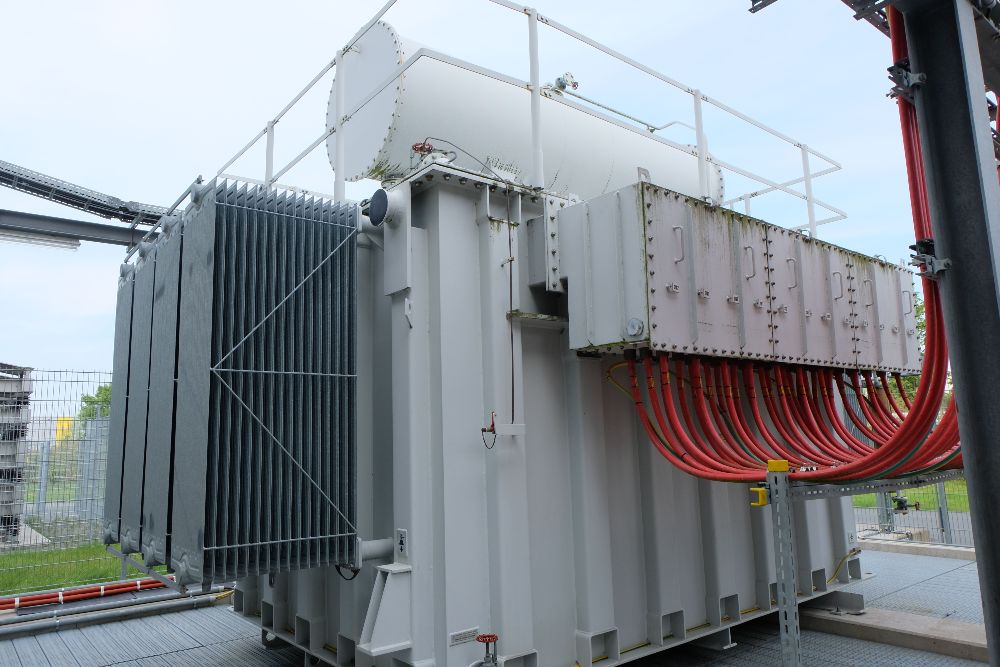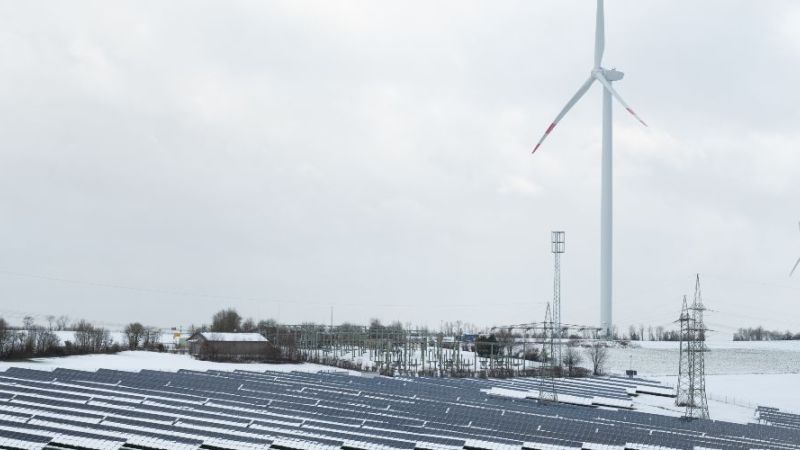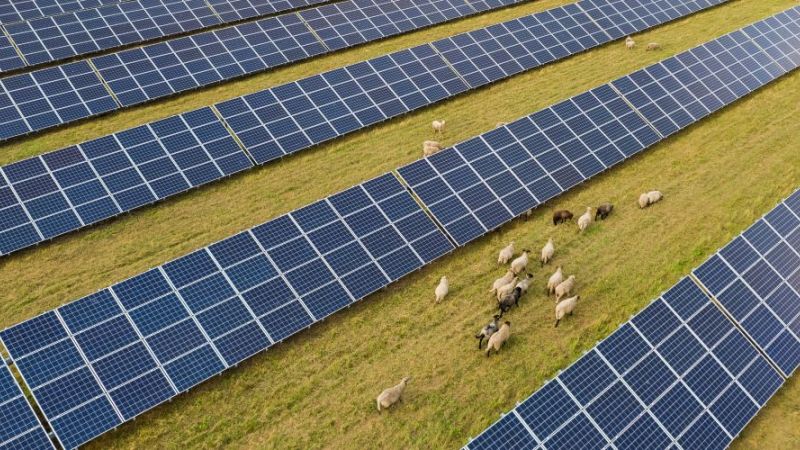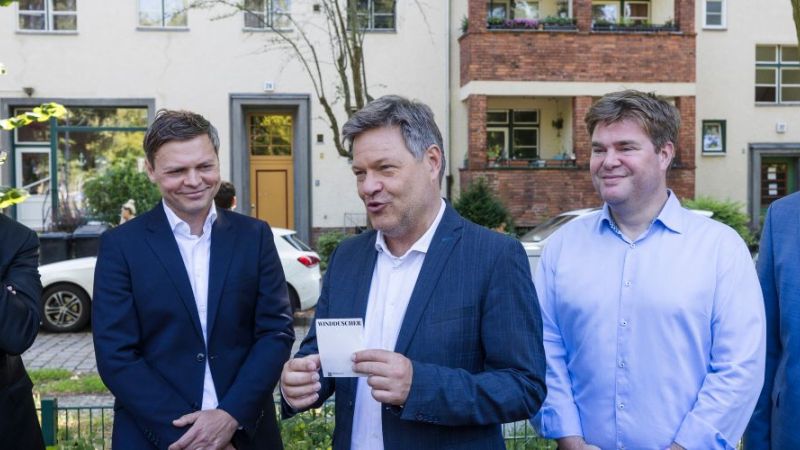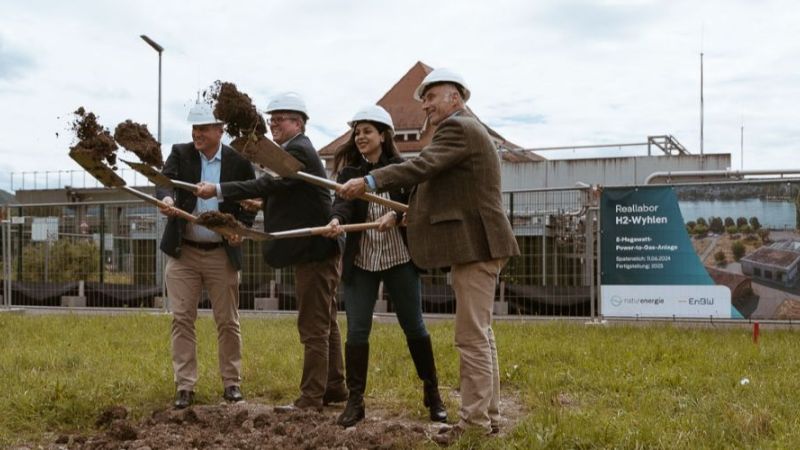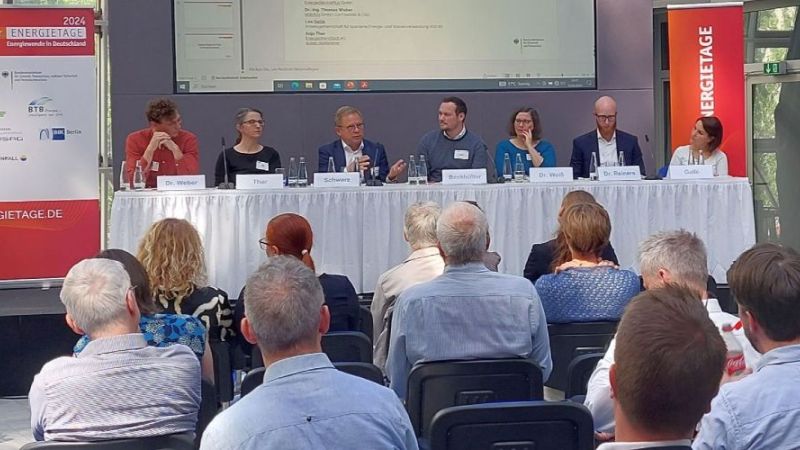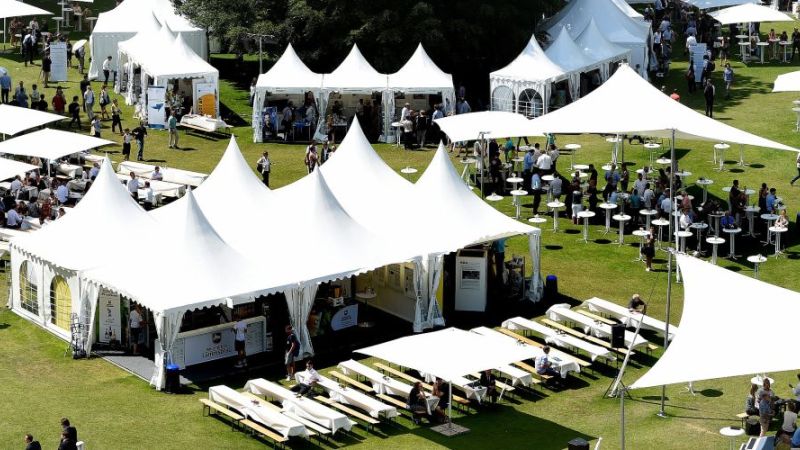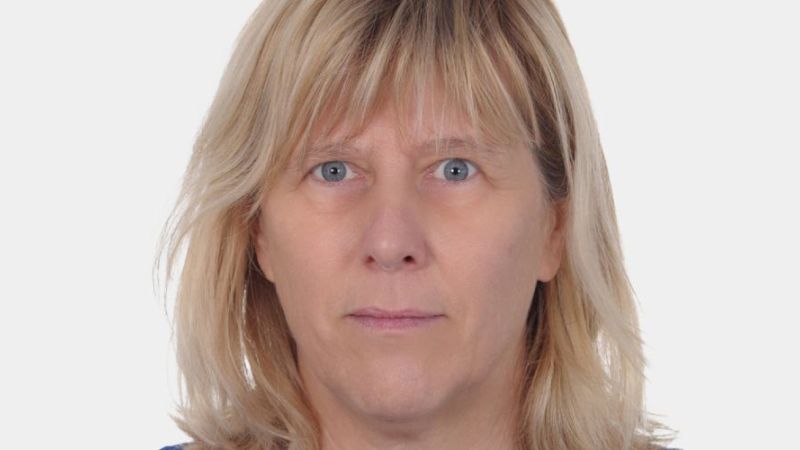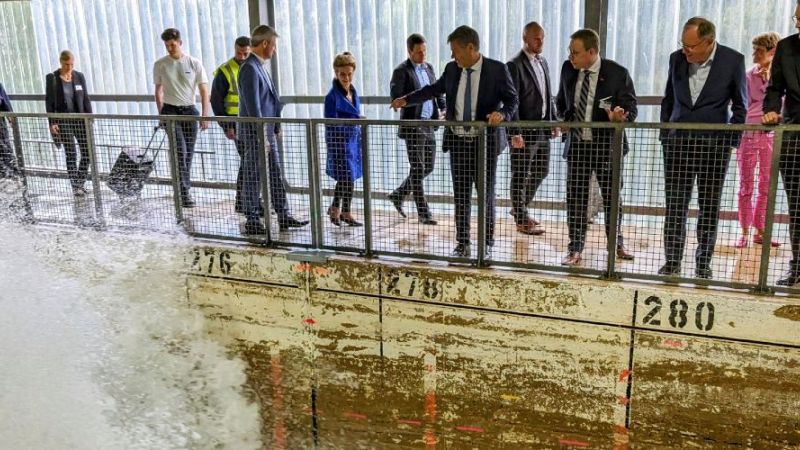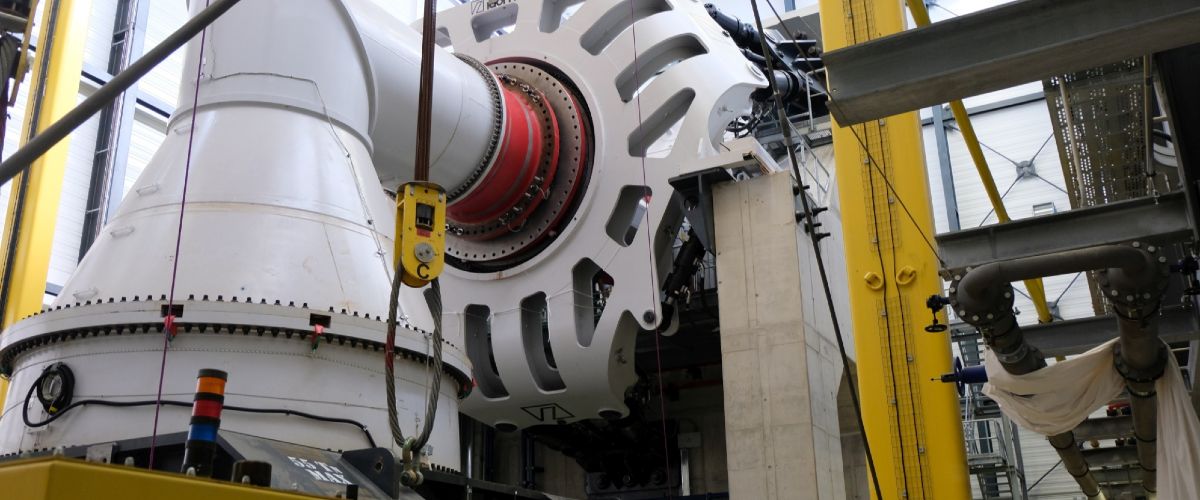 © FIZ Karlsruhe – Micaela Münter
© FIZ Karlsruhe – Micaela Münter
Wind energy
Test bench checks electrical properties of wind turbines
Torben Jersch Mission Electricity Transition 2045
INTERVIEW WITH TORBEN JERSCH
Test benches are the means of choice for creating reproducible conditions for certification tests. The Fraunhofer Institute for Wind Energy Systems IWES has already put large test benches into operation, most recently in 2015 with the DyNaLab for testing entire wind turbine nacelles. As part of the HiL-GridCoP project, it is now developing a smaller test bench together with partners from the manufacturing sector in order to specifically test the electrical properties of wind turbines. It simulates the test environment and mathematically simulates the environmental conditions. In our interview, IWES project manager Torben Jersch explains the advantages of this approach – and which steps can be expected next as a result of digitalisation.
A clear advantage of test benches in general is the time saved in the certification process, as there is no need to wait for specific wind conditions. Does the new test bench offer any other advantages?
The time saved is because this enables wind turbines to be tested parallel to the construction of wind farms, at a different time and precisely planned. With HiL-GridCoP we’re working on testing a "minimal system". This describes firstly the test setup, i.e. that we only want to test the converter, generator and transformer as well as the main control system for wind turbines. Secondly, however, doing this should also enable us to simplify the test procedures to a large extent. Interface agreements, especially for the control-based integration of wind turbine controllers with our existing larger test benches, are currently still very complex. These are no longer required if we only test a few components.
Would it therefore eventually become unnecessary to test the entire nacelle on the DyNaLab test bench? Or do they complement each other?
They definitely complement each other. The partners in our project are Vestas, Senvion and Nordex. These manufacturers have the same wind turbine topology: a gearbox plus a high-speed generator. Other manufacturers, on the other hand, have gearless systems – the DyNaLab is the right address for these. In addition, DyNaLab offers much more comprehensive system testing. In accordance with the V-model development methodology, the new test bench simply aims at a different level: the properties are validated for new developments, sometimes for entire wind turbines, sometimes only for subcomponents, components and/or materials. By now creating test possibilities for a minimal system, the tests are aimed at less complex systems than those tested in the DyNaLab. This saves money in the development process because the properties are validated on a less complex system.
So what’s the next stage? What are the individual steps?
The tests for the electrical properties are defined by national and international technical guidelines. The test methodology behind them is still based, of course, on the outdoor field tests. In a first step we will now translate this methodology 1:1 to test benches. For this purpose, our project partners are carrying out measurement campaigns in outdoor field trials. Building on this, we will try to reproduce these results and adapt our test methodology. In a second step, we will then also work on incorporating new test methods into the standard.
In contrast to other projects, the research project is focussing on test methods at full scale. Which special requirements does this create?
The biggest challenge is operating the test bench. For example, the motors cannot be regulated at will, which results in technical restrictions.
Will wind turbine manufacturers be able to completely dispense with field testing in future when it comes to testing the electrical properties of wind turbines?
That’s the goal we’re aiming for – the vision which we’re working towards. However, this cannot be realistically achieved within the next five years. The main focus at the moment is on so-called recertification tests, for example when components from other suppliers are installed or new software is developed for the system. It will be possible to completely transfer such tests to the laboratory more quickly than tests involving a completely new development.
Which milestones have you already achieved?
The certification companies are directly involved in the project, which has enabled the test specifications to be directly coordinated. Once the facility has been set up, we are very confident that the certification will work. Initial tests for measuring the electrical properties of wind turbines have already been carried out as part of the research project CertBench - Systematic validation of system test benches based on the type testing of wind turbines. The results were very good with regard to both the control method and the simulation of a virtual wind turbine.
What is the current status of the research project. What are the next steps?
In the next few weeks, the test bench will be housed in its final position in a newly constructed, purpose-built shed. It uses the grid emulator for the DyNaLab nacelle test bench to simulate grid conditions and dynamic grid events.
An important task now is to maintain confidence within the wind energy industry that our tests can replace real field tests. The basic tests will still be carried out in outdoor field trials before investigating special wind turbine features on the test bench under defined conditions. We will try to bring as many tests as possible into the laboratory. However, in the short to medium term, not all results to prove grid conformity can be completely achieved in the laboratory. In particular, questions concerning the electrical design validation cannot be answered completely.
What fascinates you personally about your work?
Fraunhofer IWES has developed into a specialist for test benches for individual components for large wind turbines. This is a very exciting topic. There are numerous opportunities to contribute and realise your own ideas. These include the large and important topic of grid integration, where we can collaborate. In addition, this also offers the chance to design certification and validation processes worldwide.
What else will be possible in future as a result of digitalisation and which tasks do you expect?
The idea of the minimal system will in future go a step further towards component certification. For example, only the converter or generator will be tested according to a standardised procedure; individual results will then be subsequently compiled in an overall certificate. It is important in this regard that we define a standard in order to guarantee a comprehensible procedure that correctly reproduces reality. We are planning a new test bench for converters and would like to start the research work this year (2019). To this end, we have applied to the German Federal Ministry for Economic Affairs and Energy for a new research project.

